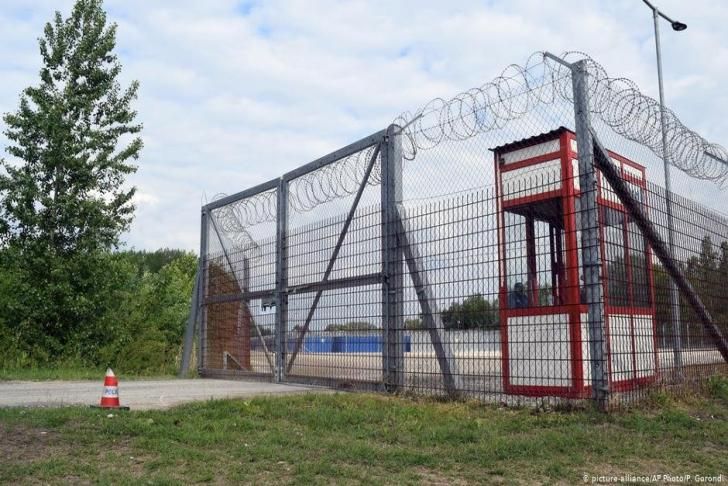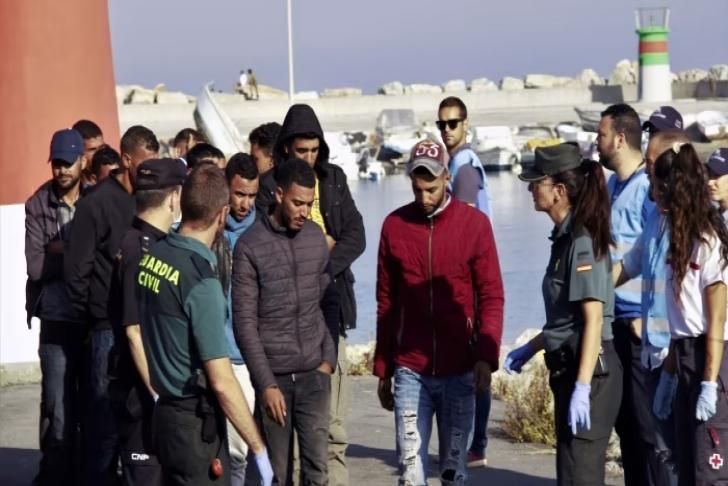Through access restrictions and the outsourcing of its asylum system, the Hungarian government has effectively made it difficult for anyone needing protection to apply for asylum in Hungary. There are several active infringement procedures. InfoMigrants examines the ways in which Hungary's "embassy system" defies European refugee legislation.
Rights groups and the European Union have criticised Hungary's existing asylum system—or lack thereof—for breaking their commitments under both EU and international law.
Since 2015, when almost 1.3 million people applied for international protection in EU member states, there has been a surge in anti-migration rhetoric by the Hungarian government. This coincided with an increase in forced returns at the border, as well as a deterioration of legal safeguards, as documented by the the Hungarian Helsinki Committee, a human rights organization based in Budapest.
Experts agree, that lack of access to the territory and the asylum procedure or any form of integration assistance have posed major obstacles to claiming asylum in the country.
Aniko Bakonyi, from the Hungarian Helsinki Committee, points out that 2015 was not just a turning point for the whole bloc, but also "for the willful destruction of the Hungarian asylum system".
Since 2015, legislation has become more and more prohibitive. Now, the Hungarian asylum system is "basically inaccessible" says Bakonyi. But more importantly, there is also legislation that "prevents people from actually entering Hungary and asking for asylum," she adds.
Closure of the transit zones
At the end of 2015, a double-layer border barrier stretching 157 kilometers was erected along the southern border with Serbia and Croatia. It cost roughly 1.7 billion euros.
In 2016, the Hungarian government also declared part of their territory a transit zone, "making this legal assumption that people who are there have not yet entered the Hungarian territory," Milica Švabić from the Serbian NGO, Klikaktiv explains.
By the following year, in March 28, 2017, Hungarian legislation stipulated that anyone applying for asylum in Hungary could only do so from a transit zone on the Serbian-Hungarian border.
"The idea was to keep people in these transit zones at the border, to allow them to apply for asylum, but then to reject everybody on the basis that they came from a safe third country i.e. Serbia. And then to return everybody back to Serbia based on the readmission agreement between Serbia and the EU," Švabić tells InfoMigrants.
Although Serbia is neither an EU member state nor a party to the Dublin Regulation, it has concluded readmission agreements with the EU and other Balkan states.
However, when the Serbian government did not accept people back on the ground that the conditions set out in the Agreement on readmission concluded with the EU were not met, people who were rejected were stuck in these transit zones, often for weeks or longer, she adds.
Bokanyi also notes that there were serious concerns about the conditions people were being held in. "People were detained irrespective of how vulnerable they were, even children, whole families,” she told InfoMigrants.
On May 14, 2020, the Court of Justice of the European Union (CJEU) ruled that the transit zone practice was illegal. As a result, the Hungarian Government closed the transit zones. Following these closures, Hungary externalized the asylum procedure to non-EU member states.
The embassy system
At the end of May 2020, Hungary introduced the embassy system, making it impossible to claim asylum on Hungarian soil. By restricting access to both the territory and the asylum procedure, the Hungarian Helsinki Committee claims that Hungary is "de facto removing itself from the Common European Asylum System (CEAS)". Now those who are in need of protection have to file a statement of intent at the embassy either in Belgrade or in Kyiv. Although, so far, no one has expressed interest in Kyiv, given the war, notes Bokanyi.
First, you put in your statement of intent and if it's approved, you are given a temporary travel permit to Hungary. Then when you arrive in Hungary, you can submit your asylum application.
Daniel Bagameri, head of office at the International Organization for Migration (IOM) in Budapest, explains that this legislation limits the scope of applications. He also states that effectively "foreigners cannot submit asylum claims under the current legislation". Because this system is largely restrictive and inaccessible, there has been a huge drop in asylum applications since 2015.
Švabić explains that not allowing people to apply for asylum in Hungarian territory, is "a major violation of international law, but also of the EU regulations."
Since 2020, May, only 21 people received this travel permit to apply for asylum in Hungary. "It's there for show, but it does not provide access to asylum," Bokanyi tells InfoMigrants.
However, Bokanyi points out that, while the previous transit zone system had a total disregard of dignity and human rights, "it provided some level of access to the Hungarian asylum system despite that being very limited." The new system barely even does that.
In October 2020, the European Commission launched the fifth infringement procedure against Hungary because of the changes to the asylum system that were introduced in May 2020.
The Ukrainian border and third-country nationals
Since the closure of the transit zones, the Serbian/Hungarian border has remained closed, but the Ukrainian border remains open. Since the beginning of the Russian war on Ukraine, more than 4.5 million border crossings have been registered, according to IOM.
Although Ukrainians receive temporary protection under European Union policy, the lack of asylum infrastructure in Hungary initially caused significant problems in accommodating those fleeing Ukraine at the beginning of the war.
Bokanyi explains that on the Ukrainian-Hungarian border, access to third-country nationals also remains difficult. In order to qualify, they must prove that they were legally residing in Ukraine before the war broke out on February 24, 2022. They are only allowed to enter if they haven't left the country since the war began, otherwise, she says, they will need to present the visa under the Schengen border code.
“It's not so easy to just come to Hungary, we have cases where people who are married to a Ukrainian and who thus would be able to get temporary protection in Hungary are not allowed to enter Hungary," says Bokanyi.
"For example, a hypothetical case where a person from Ghana is married to a Ukrainian man and then they have a child. So this woman would be eligible for temporary protection." However, Bokanyi points out that this is not always the case and there are still cases where a third-country national is simply denied entry.
Hungary's pushback measures
Since 2016, Hungary has enforced pushback measures enabling its police to deport foreigners lacking valid documentation directly to Serbia. The Helsinki Committee reports that these deportations occur without affording individuals a hearing or the opportunity to seek asylum, and no formal decision on expulsion is issued.
Despite rulings from the European Court for Human Rights (ECtHR) and the CJEU in 2020, 2021, and 2022, which deemed Hungary's pushback practices a violation of the prohibition of collective expulsion, such unlawful deportations persist.
Švabić notes that even after the closure of transit zones, the infrastructure remains intact. Thus, since 2020, these locations have continued to serve as gathering points where Hungarian police collect refugees, subsequently pushing them back into Serbia.
Moreover, since 2022, reports indicate a significant increase in violence on the Hungarian side during these pushbacks. According to Švabić, "People were reporting that the Hungarian police released dogs on them, that they were quite severely beaten, humiliated, forced to dress naked."
Without the chance to claim asylum upon entering Hungary, many asylum seekers find themselves at the mercy of smugglers at the Hungary-Serbia border. As Bakonyi explains to InfoMigrants, "If [irregular migrants] are stopped by the police, then they are pushed back. If they are not stopped by the police, then they probably keep going on and we never see them."
Furthermore, Bokanyi highlights the occurrence of chain pushbacks from Austria to Hungary and from Hungary to Serbia, emphasizing that pushbacks can occur anywhere in Hungary.
Additionally, the Helsinki Committee reports numerous cases of deportations to countries other than the original point of entry, further complicating the situation.








.svg)

